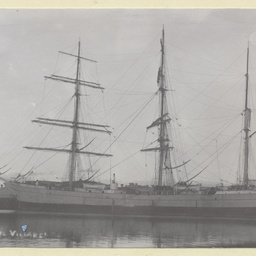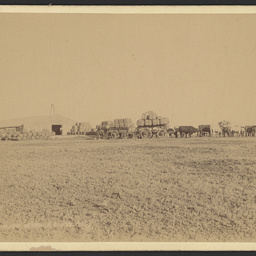Find • Port Augusta • Results 1,021 to 1,050 of 1,622


'Francesco Ciampa' steel ship
'Francesco Ciampa' steel ship 1778 tons at Port Augusta [steel 3 mast rigged vessel, 1770 gross, 1640 net tons. 267.3 x 39.3 x 20.8. Built 1890 G Ansaldo and Co. Sestri Ponente. Owners FS Ciampa and Son, registered Castelmare]


'Cavaliere Ciampa' steel ship
'Cavaliere Ciampa' steel ship 1780 tons at Port Augusta. [steel three mast ship rigged vessel. 1772 gross, 1643 net tons. 267.8 x 39.4 x 22.8. Built 1889 G. Ansaldo, Sestri Ponente. Owners FS Ciampa and Son, registered Castlamare]


'Max' steel barque
'Max' steel barque 2075 tons. At Port Augusta [steel 3 mast barque, 2075 gross, 1562 net tons, later 1933 gross, 1726 net tons. 252.3 x 39.4 x 23.6. Built 1900 A Dubigeon, Nantes. Owner: Georges Ehrenberg, registered Havre, later Banque pour l'Marine and Industrie. Lost Feb. 16, 1912 on the coast of Chile]


'Marechal de Villars' steel barque
'Marechal de Villars' steel barque 2198 tons at Port Augusta [steel 3 mast barque, 2304 gross, 1711 net, later 2198 gross, 1941 net tons. 275.4 x 40.4 x 22.6. Built 1899 Atel & Chant Loire, Nantes. Owners: Guillon and Fleury, registered Nantes. Later Soc. Nouvelle d'Armement, registered Nantes. Sunk by submarines Sept. 10, 1916]


'Berangere' steel ship
'Berangere' steel ship 2851 tons careened for painting at Port Augusta. [Steel 3 masted ship rigged sailing vessel 2851 gross, 1875 net tons, 282.8 x 44.1 x 22.7. Built 1902 Chant and Atel de St. Nazaire, Grand Quevilly. Owners: Soc de Nav du Sud-Ouest, registered Bordeaux, later Soc. Anon les Volliers Dunkerquoise reg. Dunkirk. Sunk by German submarine May 10 1917.]


'Marechal de Villars' steel barque
'Marechal de Villars' steel barque 2198 tons at Port Augusta [steel 3 mast barque, 2304 gross, 1711 net, later 2198 gross, 1941 net tons. 275.4 x 40.4 x 22.6. Built 1899 Atel & Chant Loire, Nantes. Owners: Guillon and Fleury, registered Nantes. Later Soc. Nouvelle d'Armement, registered Nantes. Sunk by submarines Sept. 10, 1916]


'Berangere' steel ship
'Berangere' steel ship 2851 tons. At Port Augusta. [Steel 3 masted ship rigged sailing vessel 2851 gross, 1875 net tons, 282.8 x 44.1 x 22.7. Built 1902 Chant and Atel de St. Nazaire, Grand Quevilly. Owners: Soc de Nav du Sud-Ouest, registered Bordeaux, later Soc. Anon les Volliers Dunkerquoise reg. Dunkirk. Sunk by German submarine May 10 1917.]

Photographs of the Adelaide Glee Club and Adelaide Male Voice Choir
Photographs of the Adelaide Glee Club and Adelaide Male Voice Choir, most of which are of groups at different times. See 'items' for details of individual photos.

![Map of South Australia, showing the line of telegraph across the continent to the Northern Territory [cartographic material] /
signed Alfred Everard Lucy](https://slsa-collections.s3.amazonaws.com/25/da/d6c4-9229-5e20-840f-4399022eb114.jpg)
Map of South Australia, showing the line of telegraph across the continent to the Northern Territory [cartographic material] / signed Alfred Everard Lucy
Shows telegraph line from Port Augusta to Port Darwin - part completed, part in progress; Lake Torrens and Peake Station; James, Devenport, Stuart's and Strangways Ranges; Arthur's Hill, Mount Denison and Sturt's Plain; Roper and Adelaide Rivers; Point Patterson. Ink.

![Plan of Overland Telegraph from Port Darwin to Port Augusta (Sheet 1) [cartographic material] /
compiled by Alexander Ringwood](https://slsa-collections.s3.amazonaws.com/58/43/e086-34fe-5896-98dc-ef6144838496.jpg)
Plan of Overland Telegraph from Port Darwin to Port Augusta (Sheet 1) [cartographic material] / compiled by Alexander Ringwood
Compiled and drawn in the Office of the Post Master General and Superintendent of Telegraphs in 1873, this map shows the boundaries of Hundreds and Counties of the northern most section of the telegraph and includes natural features of the country from surveys and explorations made by the Surveyor General, telegraph construction parties and others. There are manuscript additions showing the route of McMinn's exploring party, signed by Jno.H.P. in 1877.


Photographs of Hammond
Photographs of abandoned buildings in the South Australian town of Hammond.


Governor Sir Henry Lionel Galway
GENERAL: Governor Sir Henry Lionel Galway, Governor of South Australia, leaving the Flinders Family Hotel at Port Augusta.


Camel Train
Andamooka station homestead with camel team in foreground. The photograph shows stores being delivered from Port Augusta to the homestead which was established in 1872. By 1884 the property stocked 45,000 sheep and 900 cattle. The wool clip was 480 bales of wool. Opal was discovered on the property in 1930 and the township of Andamooka was established shortly afterward


Bullock Train, Andamooka
Wool clip leaving from Andamooka Wool Shed to go to Port Augusta.


Angorichina
[On front of photograph] 'Angorichina 1874.' [General description] Panoramic view of Angorichina station showing a bullock team carting wool. The wool was taken to Port Augusta for London sailing clippers bearing cargoes to English woolen mills. In the foreground is a creekbed filled with (probably) river red gums. Native pines are dotted across the landscape. On the right is the shearing shed and yards.The 'Angorigina (sic) Run' was named by H.C. Swann (who owned the property at the time of this photo) in 1867 on country which was originally held by Septimus Boord from October 1853 (lease no. 1591).


Blinman
Remains of the old copper mine at Blinman . Before closure in 1907 over 750,000 pounds worth of copper was mined, in days before the Farina railway it was carted 140 miles by bullock teams to Port Augusta.


Carriewerloo Station
Carriewerloo Station, north of Port Augusta.


Charlotte Waters
Aboriginal prisoners in chains - Alice Springs to Port Augusta, Captain Naulty in charge.


Clare
Distant view of the town taken from the main road between Adelaide and Port Augusta.


Motor Cyclists, Cleve
Two motor cyclists travelling from Cleve to Port Augusta.


Coondambo
[General description] Camels, men and wool bales at Coondambo Station with building and yards in the background. The wool bales are about to be loaded onto camels. [On back of photograph] 'Coondambo Station on the east-west line / July 1923'


Coondambo Station
Station hands l-r Bill Aston (cook), Barney Sheehan, Charlie Strawbridge, Jack Tuck (Contractor), Shirty Hughes working on a project at East Well.


Camel team, Coondambo
Ted Pick with his camel team at East Well.


Camel team, Coondambo
Ted Pick with his favorite camel.


Coondambo Cup
Participants in the Coondambo Cup races at the start.


Eurelia
Locomotive at Eurelia Station, east of Port Augusta in the Southern Flinders Ranges. The name Eurelia comes from the local Jadiliaura people and means "place of the ear". The Peterborouigh to Quorn railway line was built in 1881 and ran through Eurelia


Gibson's Camp
Gibson's Camp Hotel - erected in 1884. "The only hotel between Port Augusta and Tarcoola. Demolished on completion of East West Line in 1915". The hotel was the first nights camping place for "Mail Passengers". Original photograph taken approximately 1909. Writing added later.


Gibson's Camp Hotel
Gibson's Camp Hotel - erected in 1884. Note on the back of the photograph says "The only hotel between Port Augusta and Tarcoola. Demolished on completion of East West Line in 1915". The hotel was the first nights camping place for "Mail Passengers". This was the scene of many exciting episodes in days of yore. The ruins can be seen from the windows of the East West Train".


Water Source, Horrocks Pass
The source of Port Augusta's water supply at Horrocks Pass.


Camel team, Marree
Camel team resting at Hergott Springs. Seven artesian springs were used by botanist Joseph Albert Hergott who was travelling with Stuart's expedition. The springs were declared a government water reserve in 1860. A railway was built from Port Augusta to Hergott Springs in 1881. By this time the settlement already had a butcher shop, general store and a hotel. Well known Dervish Bejah established a date plantation at Hergott Springs. He was a leader in the large Afghan community and provided camels to transport wool. His date farm can be seen in the background of this photograph
